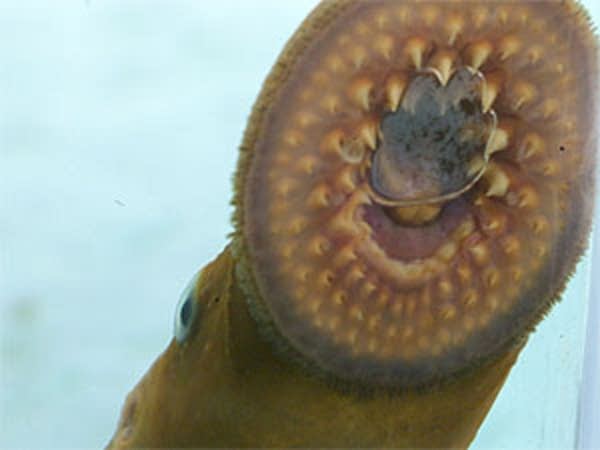State officials consider ballast discharge permit
Go Deeper.
Create an account or log in to save stories.
Like this?
Thanks for liking this story! We have added it to a list of your favorite stories.

Under an aggressive process, the Minnesota Pollution Control Agency hopes to issue all visiting ships permits by October 1st.
The permits would be similar to permits now issued to waste water treatment plants or industries that discharge water, such as iron mining companies.
The permits are the easy part. Getting ballast water clean is the tricky part.

But it is important to keep creatures from getting into Lake Superior, according to the agency's Ballast Program Engineer David Kortan, because Minnesota ports get a staggering amount of ballast water.
Turn Up Your Support
MPR News helps you turn down the noise and build shared understanding. Turn up your support for this public resource and keep trusted journalism accessible to all.
"The Duluth-Superior harbor receives by far the most ballast water discharged of any Great Lakes port - over 20 million metric tons. Note the second on the list: it's Two Harbors," Kortan explained.
Even the smaller ships in Duluth can carry more than 2.5 million gallons of ballast.
But Kortan said the thousand-foot ore carriers that pick up taconite in Duluth and Two Harbors carry a lot more.

"They have up to 15.5 million gallons. Ten or more ships a day come in to the Duluth-Superior harbor. And many of them typically come in empty of cargo but full of ballast water," said Kortan.
Consider the sheer number of unwanted fish, mussels, or even fish viruses that could be hiding in all that water, and you start getting some glimpse of the problem.
And those unwanted creatures could easily come from other Great Lakes ports. Only a third of the known exotic species in the Great Lakes have turned up so far in Lake Superior.
But fixing the problem creates another staggering set of numbers.
So far, there's no proven technology to effectively keep creatures out of ballast water or to kill them all once they are in.
Ships could be forced to have on-board waste-water treatment plants to treat a huge amount of water in a very short time. At the hearing, cost estimates for retrofitting reached a million dollars per ship.
But doing nothing also has its costs, according to Julene Boe with the St. Louis River Citizens Action Committee.
Just consider what the sea lamprey has done to Great Lakes fish. Lake trout almost disappeared after the lamprey arrived. That hammered a once prosperous Lake Superior commercial fishing industry.
"Yes there is going to be a cost to correcting the problem, but when we keep looking back, it's always been probably less expensive to prevent something than [to fix it] down the road," said Boe.
But that cost could be more than ship owners can pay, according to Dale Bergeron of the University of Minnesota's Sea Grant program in Duluth.
What's at stake, he said, goes way beyond the 58 ships now sailing between Great Lakes ports. If ships stop sailing that puts whole industries at risk, including Minnesota taconite mining.
Bergeron said the benefits of shipping are so important it may make sense for taxpayers to shoulder the cost of ballast treatment.
"You know, we're talking phenomenal amounts of money. And, at this point, at a million dollars a ship, with 58 vessels in the fleet, maybe we should just take care of it," said Bergeron. The MPCA is a long way from ordering ships to do much of anything. The permit program is just a beginning. Effective ballast treatment may still be years away. And even then, the program won't stop the march of invasive species, according the MPCA's Ballast Program Supervisor Jeff Stollenwerk.
Invasives can arrive on recreational boats, or in bait buckets, or just swim into the lakes from the Chicago River.
"I don't want the vessel discharge permit to look like this is the silver bullet that's going to stop invasive species, because it definitely is not. But it is an important step," Stollenwerk said.
And it's not really certain the MPCA's ballast program will ever take effect.
Congressman Jim Oberstar's federal ballast law would supersede state ballast regulations. Oberstar's bill could come up for a vote next week.
Dear reader,
Political debates with family or friends can get heated. But what if there was a way to handle them better?
You can learn how to have civil political conversations with our new e-book!
Download our free e-book, Talking Sense: Have Hard Political Conversations, Better, and learn how to talk without the tension.




